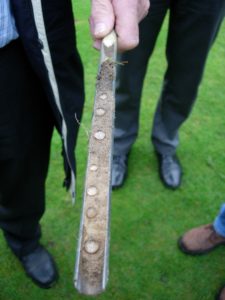With the prospect of winter turning to spring, sports turf managers can look forward to the benefits this change of season brings to their playing surfaces.
We have experienced milder winters in recent years and the timing of spring has become less predictable. However, the concept of longer daylight hours and warmer rainfall, combined with rising air and soil temperatures, benefiting cool season grasses remains the same. By definition, cool-season grasses are grass types that thrive in areas with cold winters and relatively hot summers. These grasses grow best when temperatures are between 18 and 27°C (64 and 30°F) , which is why they grow most in the spring and autumn. As you look to enhance and maximise the natural benefits of spring culturally, mechanically and biologically, we believe we have a number of products that can assist you at this key time of year.
As spring approaches you want to have the tools available to help your turf out of the winter doldrums and into spring vibrancy. Uniform soil moisture and balanced air to water ratios are critical in making sure your turf is healthy and has the greatest chance of a strong start coming out of winter dormancy. Whether you need to “wake up” the root zone to get your turf off to a good start or to seed or turf to repair winter damage, don’t let water movement issues get in the way of great turf. Be in control of water movement in the soil profile, even early in the season. We offer a selection of soil surfactants to help ready turf for play as quickly as possible and can help you design an early spring programme so turf can rebound from winter and be healthy before the stress of summer heat. Start early for better turf throughout the year.
The symptoms associated with hydrophobic soil may not be expressed early in the year but the conditions that cause them may still be present in the soil profile. We know that hydrophobic soils are re-wettable and often this occurs naturally over the wetter winter months. The taking of cores, drying them out and carrying out a simple water drop penetration test (WDPT Letey, 1969) can indicate whether the hydrophobic-causing conditions have persisted through the winter. Using a soil probe, collect soil samples and air-dry them at room temperature for two weeks. Cores must be completely dry to determine the degree of soil water repellency. Place water drops at 1cm intervals along the soil core as exhibited in Figure 1, time how long they take to move into the soil core.
Figure 1. WDPT conducted on a soil core.
The severity of soil water repellency may be determined using Table 1. The more severe the soil hydrophobicity, the more difficult soils are to re-wet which precedes poor turf quality.
Table 1. Soil Water Repellency Classification. (Ritsema and Dekker, 1996)
If the cores exhibit a level of repellency Aqueduct can be used as a pre-treatment tool to address the problem before starting a regular preventative programme. An application made at 25L/Ha in 500L of water can address these issues very effectively and significantly decrease the likelihood of hydrophobic problems such as localised dry patch during a regular preventative programme in the hotter/drier months by creating a “clean” profile so that everything performs uniformly.
Whether your winter has been wet or dry, starting a Revolution programme early will help optimise air-to-water ratios in the rootzone for a better growing environment and healthier turf. If it has been wet, Revolution will move excess water off of the surface and through the soil profile. If it has been dry, Revolution ensures rain and irrigation will get into the root zone so your turf gets the uniform moisture it needs. Revolution should be applied monthly at 19L/Ha in 800L of water. By starting with Revolution in the spring you can ensure your turf is healthy and ready for play in wet or dry conditions.
On non-irrigated areas, Dispatch Sprayable can assist in spring recovery. It ensures quick, uniform penetration of any snow melt and/or precipitation that occurs, improves soil moisture levels as the ground thaws and potentially suffers from drying out. By creating a healthier rootzone it maximises photosynthesis and root growth coming out of winter. A great product to harvest rainfall as, when and where it falls that is also proven to improve the efficiency of fertilisers.
In summary, spring is a key time for turf managers, the natural change in the weather is obviously the dominant factor closely followed by sound integrated turf management practices. At Aquatrols we believe we have a number of products that enhance and maximise the benefits of the onset of spring and can assist managers of sports turf at this key time of year.




Comments are closed.